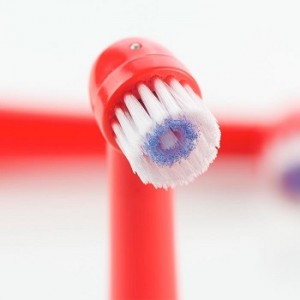
More evidence that low-calorie sweeteners are bad for your health
Studies show that artificial sweeteners can raise the risk of hypertension, metabolic syndrome, type 2 diabetes and heart disease, including stroke.

Is your toothbrush hiding a germy secret?
US researchers have found that if you use a power toothbrush the type of head it has can make the difference between a clean brush and one that harbours potentially risky bacteria
Solid-head power toothbrushes retain fewer bacteria compared to hollow-head toothbrushes
What is more, “Toothbrushes can transmit microorganisms that cause disease and infections” said lead researcher Professor Donna Warren Morris, RDH, MEd, professor at the University of Texas Health School of Dentistry.
Her research, published in the Journal of Dental Hygiene, found that solid-head power toothbrushes retain fewer bacteria than hollow-head in 9 out of 10 comparisons.
The study was conducted over a three-week period where participants brushed twice daily with one out of three randomly assigned power toothbrushes. Participants used non-antimicrobial toothpaste and continued their flossing routine throughout the study, but refrained from using other dental products like mouthwash.
“The packaging on most power toothbrushes won’t distinguish between a hollow-head and a solid-head design,” Morris said. “The best way to identify a solid-head design is through the connection to the body of the power toothbrush. Naturally, there will be some space to connect the two parts but a significant portion will be solid, up to the bristles or brush head.”
During the study the brush heads were exposed to five categories of oral microorganisms: anaerobes and facultative microorganisms, yeast and mould, oral streptococci and oral enterococci anaerobes, Porphyromonas gingivalis and Fusobacterium species.
Many of these microorganisms have been associated with systemic diseases, though data linking a germy toothbrush with systemic disease is lacking.
“We do know and there are studies that have linked Fusobacterium to colorectal cancer. Some of these other bacteria have been linked with cardiovascular disease,” Morris said. “There is a high association with gum disease and cardiovascular disease. Researchers have been able to culture the same bacteria around the heart that causes gum disease. ”
“A solid-head design allows for less growth of bacteria and bristles should be soft and made of nylon,” Morris said. “It is also important to disinfect and to let your toothbrush dry between uses. Some power toothbrushes now include an ultraviolet system or you can soak the head in mouthwash for 20 minutes.”
Good dental hygiene also dictates you change your brush regularly and especially after an illness or respiratory infection to prevent reinfection.

Please subscribe me to your newsletter mailing list. I have read the
privacy statement